
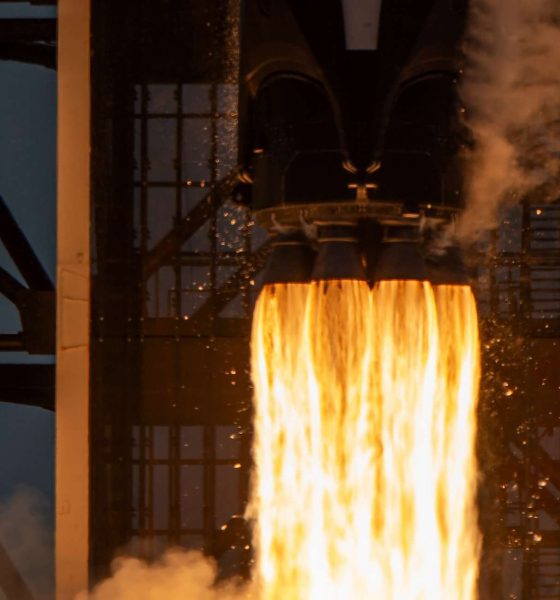
News
SpaceX to ring in Crew Dragon’s success with a Starlink launch and landing
SpaceX wants to ring in the historic success of its Crew Dragon spacecraft the only way it knows how – sending 60-satellite Starlink satellites into orbit and landing another Falcon booster as few as three days after the company’s inaugural astronaut launch.
The mission – deemed Starlink-8 – will be SpaceX’s eighth Starlink launch overall and the seventh launch of upgraded v1.0 satellites, pushing the company a mission past the halfway point towards its first internet beta test. If successful, it will raise SpaceX’s ever-growing constellation to some ~475 satellites strong, approximately 400 spacecraft shy of the ~840 COO and President Gwynne Shotwell believes are necessary to begin rolling out Starlink internet service.
Delayed from May 7th to the 17th, 18th, and 19th before SpaceX called the mission off to give Crew Dragon’s inaugural astronaut launch space to breathe, Starlink-8 is now scheduled to launch no earlier than 9:25 pm EDT on June 3rd (02:25 UTC, 4 June). Aside from taking SpaceX another step towards an operational Starlink constellation and source of income independent of launches, the launch is also on track to mark several more critical milestones both in orbit and back on (or near) the ground.
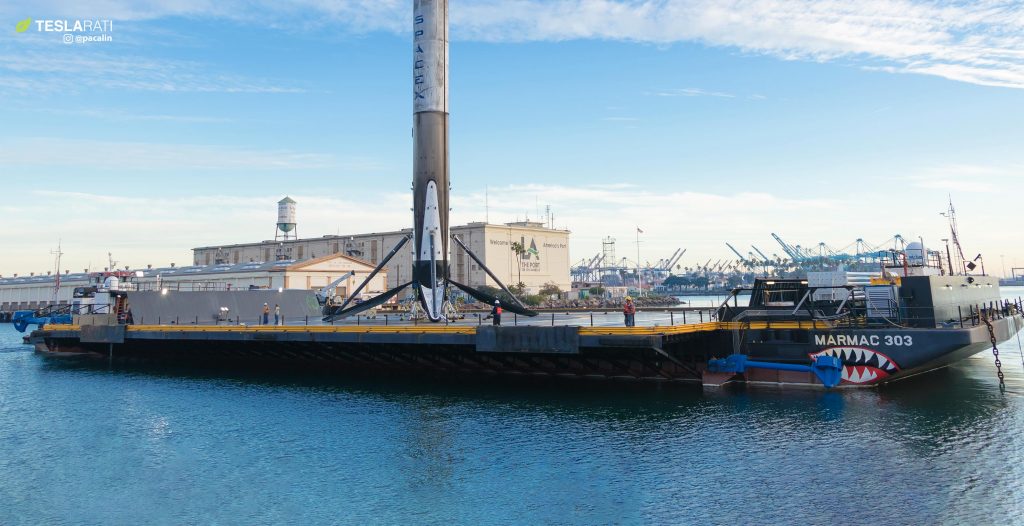
By far the most notable (and unexpected) first of Starlink-8 is related to booster recovery plans. On May 30th, the very same day SpaceX performed its first astronaut launch, drone ship Just Read The Instructions (JRTI) was spotted heading out into the Atlantic Ocean, deck cleared for the first time in the better part of a year. While initially assumed to be another one of a few sea trials the radically upgraded drone ship has performed in the last few weeks, news broke hours later that JRTI was actually heading out to sea for its first rocket recovery attempt in more than 16 months.
Replacing SpaceX’s original East Coast-based drone ship of the same name, the current iteration of Just Read The Instructions debuted in the Pacific Ocean in January 2016 with an explosively-unsuccessful booster landing after launching the Jason-3 weather satellite. The ship’s next landing attempt would come one year later and kick of seven consecutive booster landings completed over the following 24 months, followed shortly by a temporary pause of SpaceX’s West Coast launch presence.
SpaceX intends to perform its limited manifest of future Californian launches while relying entirely on return-to-launch-site (RTLS) rocket booster recoveries back onshore, freeing up drone ship JRTI to head to Florida to support the company’s far busier East Coast manifest. After transiting the Panama Canal in August 2019 and undergoing several months of refits in Louisiana, JRTI arrived in Florida in December 2019 and has been gradually upgraded at Port Canaveral over the last few months. Now, outfitted with a new Octagrabber robot and thrusters and power supplies that dwarf those on SpaceX’s other drone ship, SpaceX has apparently given JRTI the go-ahead to attempt its first booster recovery in almost a year and a half.
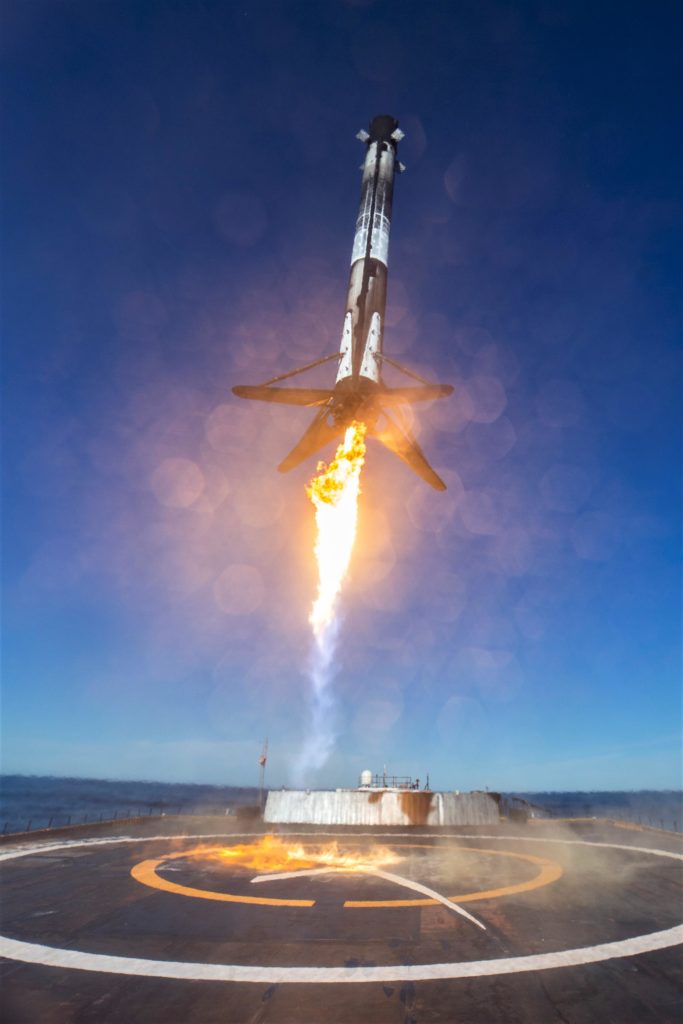
Visors, reuse, rideshares and more
Additionally, Starlink-8 is scheduled to debut SpaceX’s first “VisorSat”, a Starlink satellite modified with a visor specifically designed to prevent sunlight from reflecting off of the shiny satellites and disrupting ground-based astronomy. If successful, all future Starlink satellites SpaceX manufactures will include the modification, hopefully mitigating or wholly eliminating Starlink’s impact on astronomy.
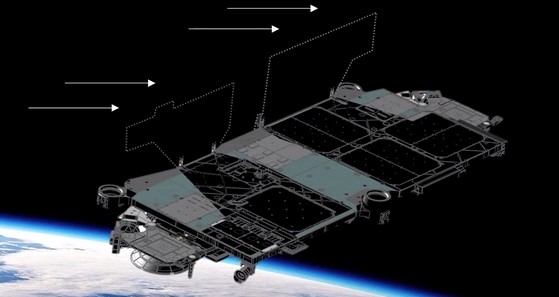
Starlink-8 is also expected to debut SpaceX’s potentially game-changing addition of rideshare slots for small satellites aboard a large portion of the company’s planned Starlink launches. Earth imaging company Planet is the first announced customer, with three ~125 kg (~300 lb) SkySat imaging satellites manifested on Starlink-8. Potentially costing Planet just $1 million apiece, the launch option could easily become industry-leading if SpaceX can regularly include several hundred kilograms of 3rd-party satellites on each of the 20+ Starlink missions it’s likely to launch annually.
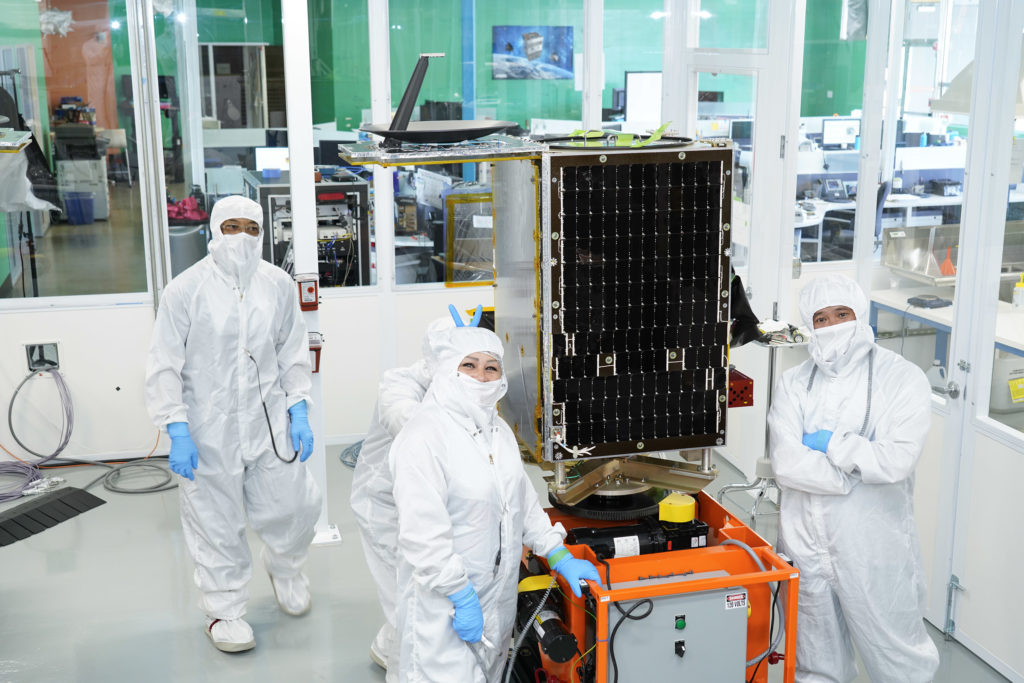
Finally, Next Spaceflight says that Falcon 9 booster B1049 has been assigned to support Starlink-8, meaning that the mission will be the second time ever that a Falcon 9 booster has attempted its fifth orbital-class launch. Starlink-8 will come two and a half months after improper refurbishment caused Falcon 9 booster B1048 to suffer an in-flight engine failure during its fifth launch. While the booster changed its flight program on the fly to ensure the Starlink-6 mission was successfully completed, B1048 did so at the cost of its landing propellant, ending the booster’s productive life with a violent crash somewhere on the surface of the Atlantic Ocean.
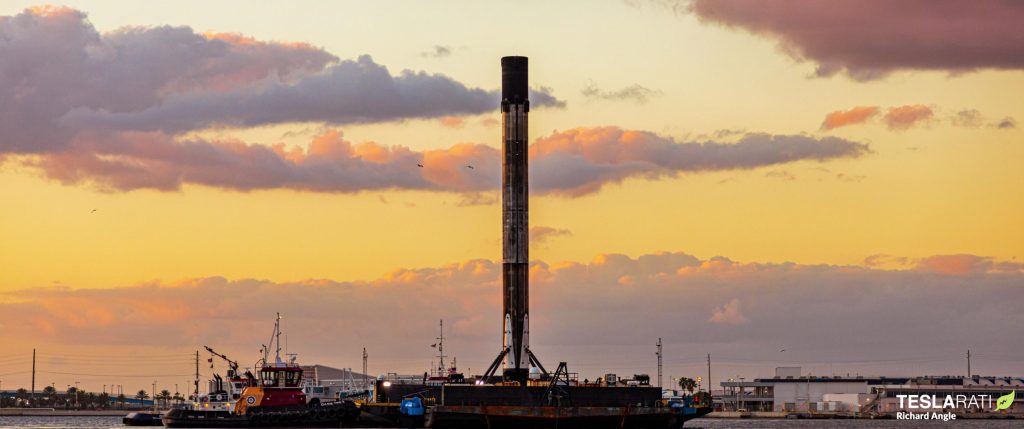
If B1049 can successfully launch and land for the fifth time on June 3rd, it will become the pack leader of SpaceX’s fleet of reusable rockets. With a safe landing, B1049 can prepare to become the first booster to launch six times, hopefully proving that Falcon 9 can safely fly six, seven, eight, or more times – perhaps one day cresting 10 launches to achieve Falcon 9 Block 5’s design goal.
Check out Teslarati’s Marketplace! We offer Tesla accessories, including for the Tesla Cybertruck and Tesla Model 3.

Elon Musk
Elon Musk’s Biggest Revelations on AI, Robots, and the Future of Work from the Moonshots Podcast

Elon Musk’s appearance on the Moonshots with Peter Diamandis podcast was packed with bold predictions, candid admissions, and surprising tech insights. The nearly three-hour conversation covered everything from artificial intelligence to humanoid robots, geopolitics, and the future of work. Here are the top 10 most intriguing takeaways:
-
Aggressive AGI Timeline Predictions
Musk offered a detailed view on when artificial general intelligence (AGI) could emerge, suggesting it may arrive sooner than many expect, emphasizing both transformative potential and risks.
-
U.S. vs. China in the AI Race
He discussed the strategic competition between the United States and China over AI development, noting that geopolitical dynamics will shape how and who leads in the next decades.
-
Future of Job Markets
Musk touched on how AI and automation could reshape employment, predicting massive boosts in productivity alongside potential disruptions in traditional work structures.
-
Clean Energy Transition
A recurring theme was the role of clean energy in future economies, with Musk reiterating the importance of scaling sustainable power generation and storage.
-
Humanoid Robots Are Coming
On the podcast, Musk elaborated on Tesla’s work on humanoid robots, hinting at timelines and applications that go beyond factories to general-purpose assistance.
-
Tesla Roadster “Last Human-Driven Car”
Outside the core discussion topics, Musk teased features of the upcoming Tesla Roadster — calling it “the best of the last of the human-driven cars” and suggesting safety won’t be its main selling point.
-
The Role of AI in Clean Energy and Robotics
Linking AI to both energy optimization and robotics, Musk explained how smarter systems could accelerate decarbonization and task automation across industries.
-
U.S. Innovation Leadership
Musk argued that maintaining American leadership in key tech sectors like AI, space, and robotics should be a national priority, with thoughtful policy and investment.
-
Job Creation vs. Job Elimination
While acknowledging automation’s disruptive effects, he also outlined scenarios where new industries and opportunities could emerge, particularly in AI, space, and advanced manufacturing.
-
Long-Term Vision for Humanity
Throughout the conversation, Musk revisited his long-term philosophical views — including a belief in humanity’s responsibility to become a multi-planetary and technologically empowered species.
Whether you agree with Musk’s optimism or not, the podcast offers a window into the thinking of one of the most influential figures in tech today, in and why his visions continue to spark debate and inspiration.
Elon Musk
Elon Musk just said some crazy stuff about the Tesla Roadster

Elon Musk appeared on the Moonshots podcast with Peter Diamandis today to discuss AGI, U.S. vs. China, Tesla, and some other interesting topics, but there was some discussion about the upcoming unveiling of the Roadster, the company’s electric supercar that will arrive several years after it was initially slated for release.
Musk made some pretty amazing claims about the Roadster; we already know it is supposed to be lightning-fast and could even hover, if Tesla gets everything to happen the way it wants to. However, the car has some pretty crazy capabilities, some of which have not even been revealed.
On the podcast, Musk said:
“This is not a…safety is not the main goal. If you buy a Ferrari, safety is not the number one goal. I say, if safety is your number one goal, do not buy the Roadster…We’ll aspire not to kill anyone in this car. It’ll be the best of the last of the human-driven cars. The best of the last.”
🚨 Elon on the Roadster unveiling, scheduled for April 1:
— TESLARATI (@Teslarati) January 6, 2026
Musk makes a good point: people who buy expensive sports cars with ridiculous top speeds and acceleration rates do not buy them to be safe. They hope they are safe in case of an emergency or crash, but safety is not at the forefront of their thoughts, because nobody buys a car thinking they’ll crash it.
The Roadster is truly going to push the limits and capabilities of passenger vehicles; there’s no doubt about that. Tesla plans to show off the new version car for the first time on April 1, and Musk has only hinted at what is possible with it.
Musk said back in November:
“Whether it’s good or bad, it will be unforgettable. My friend Peter Thiel once reflected that the future was supposed to have flying cars, but we don’t have flying cars. I think if Peter wants a flying car, he should be able to buy one…I think it has a shot at being the most memorable product unveiling ever. [It will be unveiled] hopefully before the end of the year. You know, we need to make sure that it works. This is some crazy technology in this car. Let’s just put it this way: if you took all the James Bond cars and combined them, it’s crazier than that.”
Production is set to begin between 12 and 18 months after the unveiling, which would put the car out sometime in 2027. Hopefully, Tesla is able to stay on track with the scheduling of the Roadster; many people have been waiting a long time for it.
News
Tesla launches hiring for Robotaxi program in its twentieth country
Overall, the hiring signals Tesla’s aggressive timeline for global dominance in autonomous mobility.

Tesla has launched a hiring initiative for its Robotaxi program in its twentieth country, as the company posted two new jobs in Thailand this week.
Tesla is hiring in Bangkok and Kowloon for the Vehicle Operator position, which is related to data collection, and is the first in Thailand, but the twentieth country overall, as the company tries to expand into other markets.
🚨 BREAKING: Tesla is hiring additional full-time Vehicle Operators in Bangkok, Thailand.
Previous openings were 6-month, part-time roles. These are equivalent to AI Safety Operator roles in the U.S. pic.twitter.com/R6LzoU1bos— Tesla Yoda (@teslayoda) January 5, 2026
Tesla has had active job postings for Vehicle Operator positions in the United States, India, Israel, Taiwan, Germany, the Czech Republic, Hungary, the UK, Finland, Switzerland, Sweden, the Netherlands, Austria, Spain, Norway, Italy, and Turkey in past listings.
These postings are not all currently available, likely because the roles have been filled.
Thailand is the most recent, and broadens the company’s potential path to expanding its ride-hailing program, which is only active in the United States in Austin, Texas, and the California Bay Area, so far.
These roles typically involve data collection, which assists in improving Autopilot and Full Self-Driving operation. Tesla’s self-driving programs utilize real-world data that is accumulated and stored, observing vehicle and traffic behavior, as well as tendencies that are performed by human drivers to help increase safety and overall performance.
Overall, the hiring signals Tesla’s aggressive timeline for global dominance in autonomous mobility. Although the company has several high-profile rivals and competitors in the field, it has established itself as a main player and a leader in the development of autonomous technology, especially in the U.S., as its FSD suite is refined on almost a weekly basis.
The Full Self-Driving suite is available in seven countries and territories currently, including the U.S., Canada, China, Mexico, Puerto Rico, Australia, and New Zealand. Its biggest goal for expansion is currently the European market, where regulatory hurdles have been the main bottleneck prolonging its launch on the continent.
Tesla has performed months of testing in various European countries, including France and Spain, and does have support in some areas from various regulatory agencies. However, the company is hoping to get through this red tape and offer its suite in Europe for the first time, hopefully this year.








